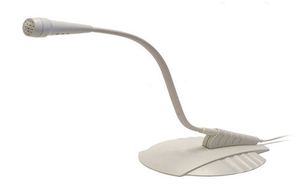In February of 2011, I wrote an article comparing Dragon NaturallySpeaking version 11 against the speech recognition in Microsoft Windows version 7. Since that time, both Microsoft and Nuance have issued new products. For those who are interested in dictation I thought it be a good time to compare the latest offerings from both companies.
The 2012 version, Dragon NaturallySpeaking 12, is available in several editions. You have the choice between Dragon home, Dragon premium, Dragon professional, or Dragon legal. The home version includes a comprehensive vocabulary that should suffice for most people, including many professional fields. The difference really comes into play when you’re using multiple devices to input your dictation. They promise up to 99% accuracy. There is an additional 20% improvement in recognition over previous additions. While they’ve added some great features,one of the most notable improvements is the recognition speed. Dragon has been pretty good in the past with the speed of its speech recognition. Well, it has definitely improved.
As I mentioned before, now it’s possible to use more devices for your transcription input. This includes your smartphone via an app. Sources are not only limited to smartphones. You can use other sources like MP3 and WAV files as alternate input methods. So now you’re on-the-go lifestyle can include your transcription. This is a great tool for professionals on the road. Support for iPhones and android phones comes from apps that are available from either iTunes or the Google apps marketplace. I’m not using the iPhone application but I can tell you that the Android app, Dragon Go, is well built and robust.
With the investment that Microsoft has put into the development of Windows 8, including its new user interface, you would have expected an expansion of the features that were available in Windows 7 and Windows Vista. Apparently, Microsoft has not taken speech to text as seriously it should have. The system is the same as it was in the last 2 versions of Windows. I find it interesting that Microsoft’s in car audio interface performs better than their PC-based system. While Microsoft made a huge investment into the development of the Windows 8 user interface, they did not do much to enhance the hands-off experience. I think with changing driving laws there will be a real need for audio control of your information and communications without having to remove your hands from the wheel.
While it does provide basic functionality including dictation and application control, it is nowhere near as robust as other offerings. For example, one glaring feature that seems to be missing is an, Apple-like, Siri application for Windows 8. I believe Microsoft did not see speech as anything other than a minor accessibility feature. This is one place where they may have missed the boat. Specially because mobile speech to text recognition will likely be required while driving. Devices will have to be, “hands off”, from time to time as the need arises.
In general it seems like it takes a lot longer for the Microsoft product to be properly trained to recognize your voice accurately. Since it seems that there was no real underlying code change this is not a surprise. To get the best accuracy it took me multiple times to train Windows 8 by reading aloud text. It still tends to get a bit confused at times. Let me take one moment to make a note, it’s imperative with any speech recognition system to have a good microphone. I use a headset with a USB microphone. In my experience. It is the best solution for speech recognition. This seems to be true whether you are using Windows native speech recognition or Dragon. When you consider dictation from other devices, such as a smart phone, use Dragon.
With dictation, Dragon has some significant advantages. It does a much better job at translating your dictation into other programs. So for example, if you use enhanced web-mail from services like Hotmail and Gmail; Dragon allows you to better control functions within the interface. It also seems to be far superior in its ability to dictate and format in those web applications. In my opinion Dragon is much smarter. You don’t have to go to quite the same extremes to make something look presentable. The commands to control things are easy and effective.
Another disadvantage of the Windows 8 speech recognition system is that it is a one-size-fits-all implementation. Nuance offers essentially for versions of Dragon Dictate but most people will be able do just fine with Dragon home which retails for somewhere near $75. This brings up an interesting point Microsoft Windows 8 starts off at prices that are somewhere near half of that. For that amount of money you do get a whole operating system, if only the most basic version. So if you are looking for dictation and speech-to-text recognition think Dragon.
